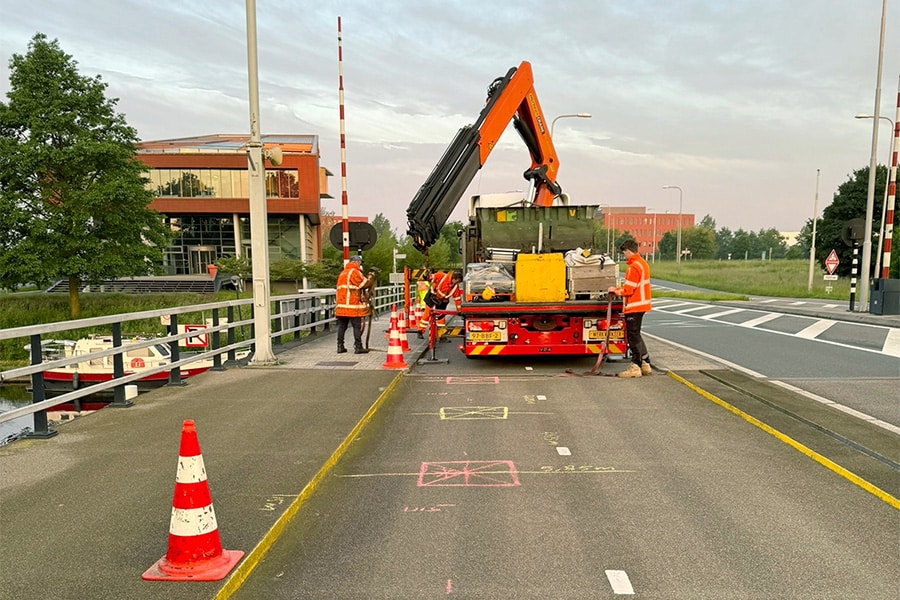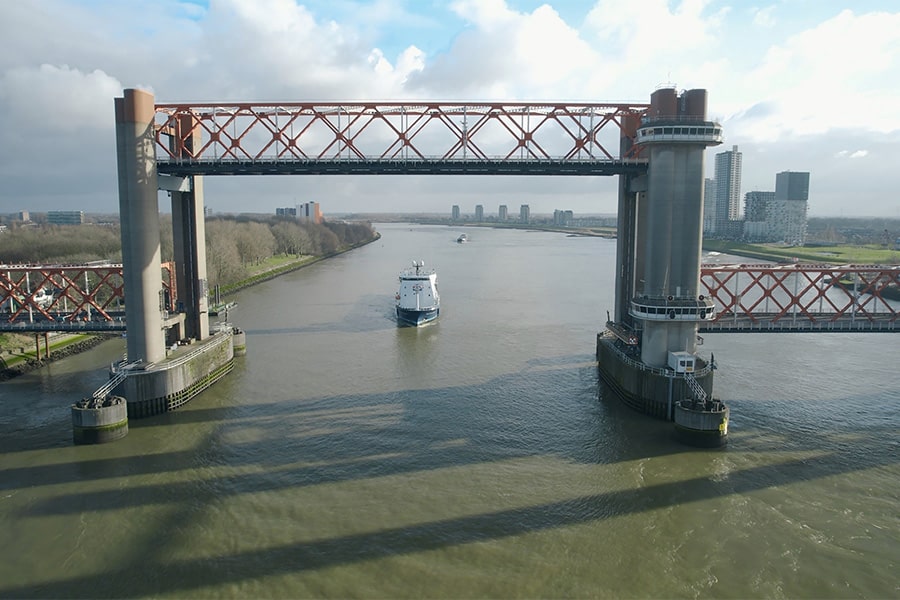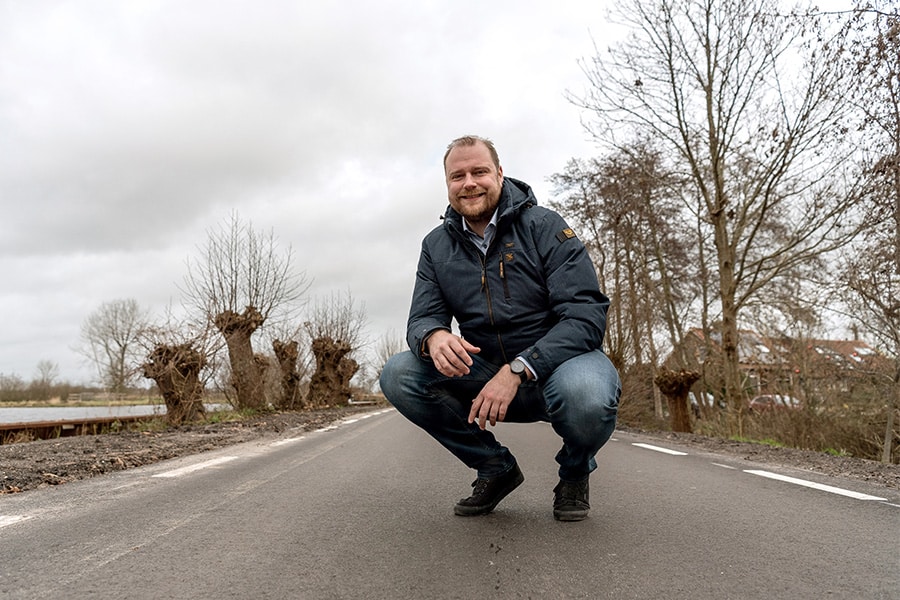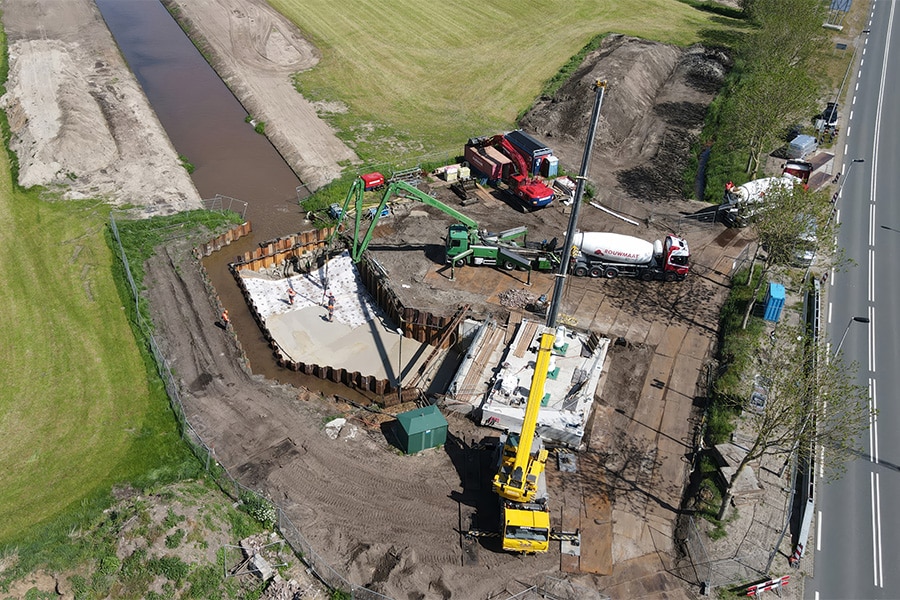
A complex project brings out the best in competencies
The work currently taking place in front of Amsterdam Central Station is high-profile in scope and complexity. Max Bögl & Partners is tackling the entire area on the center side of CS on behalf of the City of Amsterdam. Knipscheer Infrastructuur BV from Almere has been in the picture since the tender phase. Their work: assessing and pricing road infrastructure, taking care of the implementation design, realizing the infrastructure and also taking care of the concrete work of the relocated streetcar tracks. We speak with René Knipscheer, director and owner of Knipscheer Infrastructure, Piet van Voorst, project manager and Maarten Laurant, also project manager, about a complex project, where no two days are the same.

Western access redesigned
Project The Entrance started in early 2018 with the deepening of the road under the tracks on the west side of the station: the Western Access. "In 6 months, we redesigned the entire Western Access and increased the headway under the viaduct by 50 cm, it now measures 4 meters," René opens the conversation. Maarten adds: "Working under Design & Construct, the work is very complex. Not so much because of the work itself, but mainly because of the location and the many changes in the work. So many challenges, which require a lot of flexibility and resilience. From all partners by the way, but the cooperation is perfect and the communication is top notch."

Each company's specialty
"We are working on this project with 12 partners and several subcontractors, each with their own specialty. In the tender phase, Max Bögl already committed us for the infra work, we spent 9 months on it. When Max Bögl & Partners won the tender in 2017, we could start. So we were at the table very early," says René. To which Maarten adds, "The environment is the biggest challenge. The work on the Prins Hendrikkade between Damrak and Kamperbrug is divided into 11 work sections. The environment team coordinates all BLVC measures. Working on this project means pushing boundaries and making compromises, with the UAV-GC contract in the background. The client wants to give up as little public space as possible, the contractor wants as much work area as possible."

Unexpected issues require flexibility
Maarten continues: "Every week we are confronted with changes. An example is the Prins Hendrikplantsoen, where archaeological elements -old quay walls- caused changes. We encounter unexpected foundations, unknown obstacles with respect to the area data, and incorrect or undocumented cables and pipes. We record about 5 of these reports per week. That demands an enormous amount of your own flexibility and that of the other partners. The cooperation is so good, however, that we manage this together."
Pete stresses the importance of having true professionals on these types of projects. "You have to know what you're doing; some 'surprises' are not entirely without danger. For example, we find medium and low voltage in places where we don't expect it, close to the road surface. With urban works you always have to be extra careful, on this project we have to be very alert all the time." Receiving last-minute change requests also presents challenges, according to René. "For example, changes to traffic flows in the city center. Maarten adds: "Regarding the aforementioned changes, the 321st VTW did pass, in the 3 years we have been working there."

Good teamwork makes people grow
Within the scope of Knipscheer Infrastructure are the entire road infrastructure, reconstruction work (everything from ground level to 60 cm below ground level is for Knipscheer Infrastructure), all gully connections, drainage of rainwater, the concrete work on the streetcar tracks, the entire site layout including paving and street furniture. Very extensive, in other words. "We are also coordinating the installation of the streetcar stops," René said. "The public lighting and VRI are also within our scope. The whole design is done by Maarten. The DO is with Max Bögl & Partners, the UO is in the hands of the Laurant Group (Maarten). He translates the DO into a technical 3D plane and provides the working drawings."
René is proud that a company the size of Knipscheer Infrastructure has been trusted to tackle such a complex project. "We were selected because of our good communication, our patience, our consistent demarcation of the work area, the fact that we are so multidisciplinary -both a concrete department and an infra department-, our experience with natural stone and our short lines of communication. We have everything we need to perform efficiently, quickly and reliably on such a complex job." Maarten: "We deliver quality with a proactive, positive approach, from the first pen mark to the final administrative completion. It's teamwork between Knipscheer and Laurant. You see the people at work grow because of it. We are Max Bögl's biggest partner in this story."



